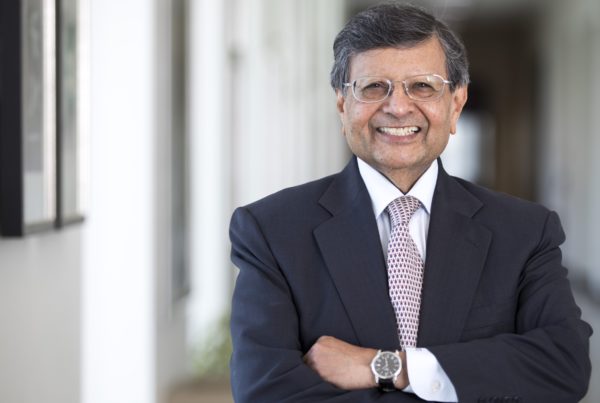Published: Apr 15, 2002 in Knowledge@Emory
This quarter’s largely negative earnings numbers for the telecom sector won’t be the last, warn industry experts at Emory University’s Goizueta Business School. They say investors should expect continued bad news for at least the rest of this year and a gradual recovery beginning in 2003.
Stocks in Dow Jones’ telecommunications index are already down 75% for the past two years. This week, the $300 billion sector was hit with more bad news, as companies reported largely disappointing quarterly earnings. On April 22, Ericsson, the largest supplier of mobile systems in the world, announced that it intended to layoff as many as 17,000 workers or 20% of its 85,000 workforce. (Some estimates suggest 20,000 people could get the ax.) Corning, a leading manufacturer of fiber optic cable reported its sales were down by about half from the previous year, $898 million for the quarter. And Lucent Technologies reported its sales were down 40% for the quarter from the previous year.
The industry’s troubles all come down to too much supply and too little demand, according to Wenli Wang, a professor of decision and information analysis in Emory’s Goizueta Business School. “The troubles in the telecommunication industry are caused by both internal and external forces – with excess supply in the midst of economic recession with scarce demand,” she notes. “For the sector to fly again, the overall economy needs recover and supply needs to be adjusted to fit with the demand.”
Jagdish N. Sheth, a professor of marketing at Goizueta predicts that the process of restructuring the industry so that supply again matches demand will take at least the rest of this year. “The rationalization has just begun, actually,” he says.
Crippled by high debt levels, a low stock price, and insufficient cash flow, many telecom companies can’t just reach out and merge with someone. They also have too much debt and unmarketable assets to interest a suitor. Caught in this squeeze between cash and debt, Sheth says he expects many more companies will declare bankruptcy by year’s end. “We expect that starting now through the end of this year there will be a lot more Chapter 11 declarations in the industry.”
But shouldn’t today’s low interest rates buy the troubled telecoms more time? Economist George J. Benston, a professor of finance at Goizueta, says that interest rates should have no bearing on the case. “Interest rates have a particular level, mostly depending upon the expected level of inflation… so if interest rates are low because inflation is not expected to be very high, then it has no meaningful effect.”
With little relief in sight, a shakeup is underway. Indeed, last year, many young local telecom services such as Winstar went belly up. This year, Sheth believes that it’s the long-distance players’ turn. “All long distance companies will be gone by the end of this year,” he predicts. Sprint is in the best shape for a purchase, with a broad mix of revenue streams. MCI WorldCom is in the worst shape, since its high debt levels make it likely that the company will be forced to either sell off pieces of itself or go into Chapter 11, Sheth says. Even AT&T, which once owned most of the country’s telephone business, is vulnerable. AT&T will either merge with a regional Baby Bell or with a foreign telecom company, he predicts.
For consumers, consolidation will be a mixed blessing, Sheth says. As companies scramble to regain profitability, he believes the fixed-line industry will move increasingly toward fixed-fee pricing, similar to the monthly subscription model used by AOL and other ISPs. Right now, he says, only one in five consumer customers for each long distance carrier is profitable. The rest are subsidized by their profitable customers. As with ISP and wireless contracts, fixed-fee pricing is good news for heavy users, but for people who aren’t on the phone that much, it’s likely to end in more expensive phone bills. Sheth estimates that telephone bills will go up to $100 or $120 per month. For light users, he says, the best strategy will be to buy phone cards or use other discounted phone services.
On the wireless side, Wang foresees an upturn in the near future as more wireless data services become available. She cited AT&T’s new mMode services as an example. Like the successful iMode system from NTT DoCoMo in Japan, mMode will provide subscribers with a wide variety of data services, such as news alerts and games for a fee based on the amount of data used. Wang also says that the decision by AT&T, Cingular and VoiceStream to adopt the GSM/GPRS wireless infrastructure should boost revenues, since this technology is easier to upgrade and more interoperable in the global market than the CDMA technology adopted by Spring and Verizon. AT&T will probably purchase Cingular and VoiceStream and, hence, will have the largest wireless coverage in the U.S. In addition, adopting new technologies and services “will drive the U.S. wireless industry closer to those in Europe and Japan,” thereby making them more competitive.
Wang says that companies should be looking abroad for more growth as well, to such growing markets as mainland China, which recently opened up its telecom sector to foreign investment.
What other lessons can be learned from watching the telecom shake out? According to Emory’s telecom experts, the moral may be the same as in the fine print of the mutual funds: past performance may be no indication of future results.
Of course, in hindsight it seems clear that companies that overbuilt in the 1990s were doing the wrong thing, but at the time, investors looked to the results of the first telephone deregulation in the 1980s as a model, according to Sheth. “Prior deregulatory efforts had been very positive for the new entrants,” he says. For example, MCI and Sprint became household names following the opening up of long distance service to competition.
But this time around, several things went wrong, according to Sheth. The first was that many companies overpaid on their purchase of bandwidth from the government. The second, that investors believed that the local telephone exchanges could be opened to competition relatively quickly, which turned out not to be the case. “Nobody figured out the extraordinary costs you will incur in the last one mile,” he says.
Finally, there was another factor that went a little too right, in retrospect: telecom stock prices. The dotcom boom lifted the prices of telecom stocks astronomically, and this led telecoms to both overpay in their acquisitions, and to borrow against their equity, Sheth says. Now that prices have returned to earth, it’s led to a difficult situation for many companies.
But in the long run, Wang predicts that it will be the big players that win over the startups. For example, “although WorldCom’s stock was down 33% on Monday and 15% on Tuesday, April 23, the company still has its market strength: it has the biggest market share (44%) of the ISP backbone in North America and provides the largest global IP network. WorldCom is also the leader of the gobal voice market. In the era of globalization, such strength will certainly bring profits in the long run.”





